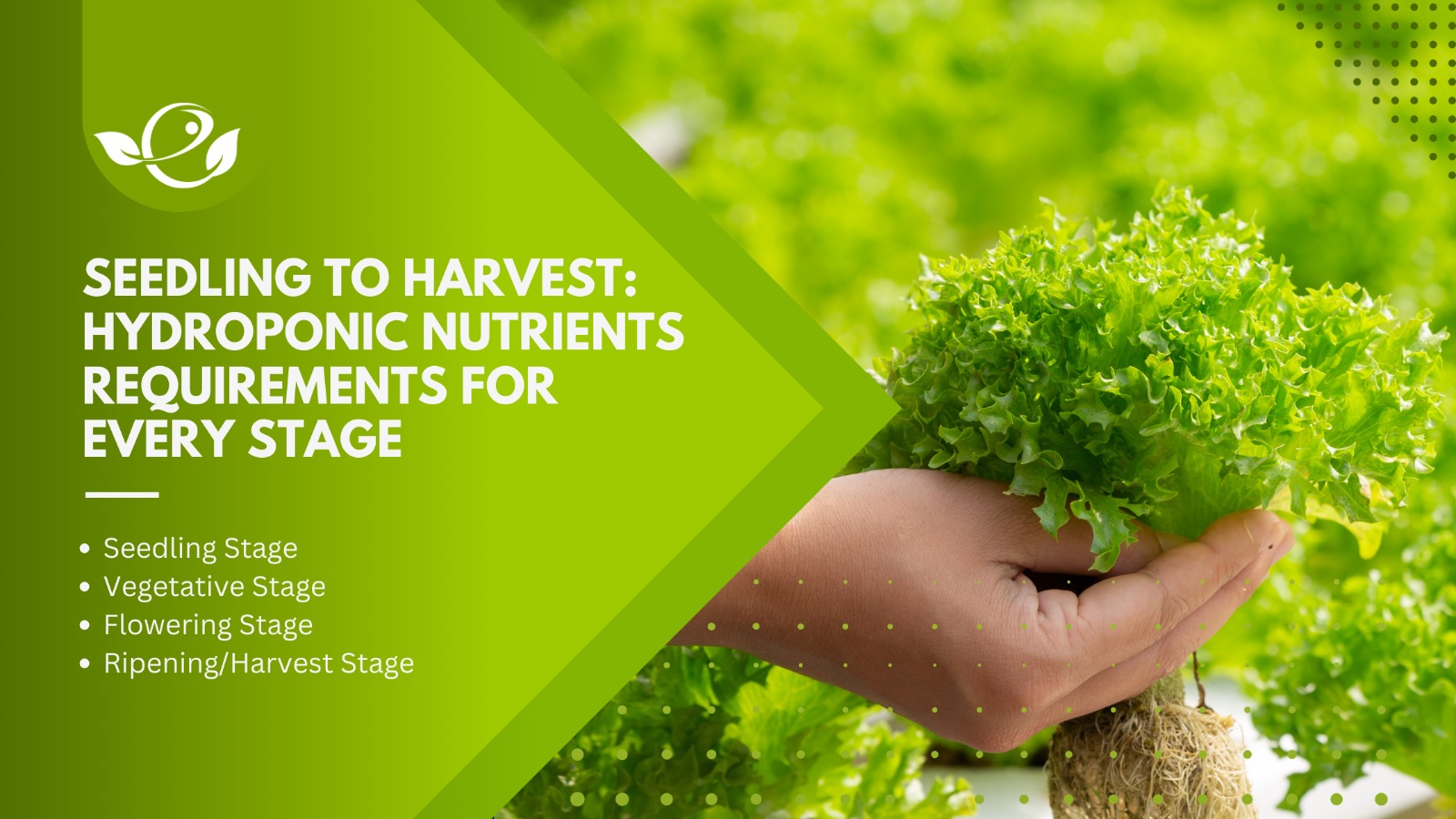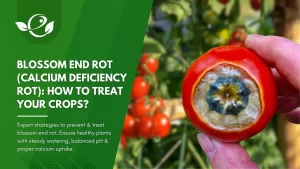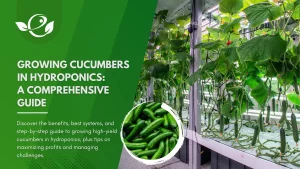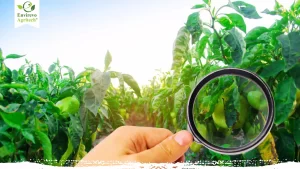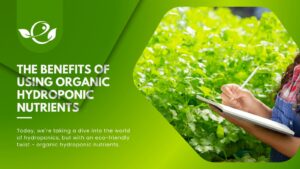Table of Contents
Welcome, fellow hydroponic enthusiasts, to the wild and wonderful world of plant growth stages! We’re about to embark on a journey that will take us from tiny seedlings to luscious harvests, all with the help of one magical ingredient: hydroponic nutrients. So, strap on your gardening gloves and prepare for a nutrient-filled adventure like no other!
Now, you might be wondering, “What’s the big deal about hydroponic nutrients? Can’t plants just survive on water and a little bit of sunshine?” Oh, my dear green-thumb friend, if only it were that simple! Just like humans need a balanced diet of burgers, broccoli, and the occasional slice of cake, plants have their own nutritional needs too.
But fear not! In this guide, we’re going to unravel the mysteries of nutrient requirements for each stage of plant growth in a way that even the most “rooted” beginner can understand. And don’t worry, we’ll sprinkle in a healthy dose of humour along the way to keep things light and entertaining. After all, who said learning about hydroponic nutrients couldn’t be fun?
From the adorable seedling stage, where plants are like delicate babies needing extra care, to the glorious harvest, where we reap the fruits (and veggies) of our labor, we’ll explore the unique nutritional demands of each phase. Get ready to discover the secret recipes for plant success and unlock the full potential of your hydroponic garden.
So, whether you’re a seasoned hydroponic veteran or just dipping your roots into this fascinating world, join us on this nutrient-fueled adventure. Together, we’ll learn how to nourish our plants, make them flourish like never before, and maybe even impress our friends with our newfound green thumbs.
So, grab your nutrient bottles, put on your thinking caps, and let’s dive into the marvellous world of hydroponic nutrient requirements at every stage of plant growth. Get ready for a nutrient-rich adventure that will make your plants shout, “Leaf me alone! I’m growing!”
Seedling Stage: Nurturing our Tiny Green Babies

Ah, the seedling stage. It’s like the adorable baby phase of plant growth. Those little green sprouts, barely peeking through the soil, are just starting their journey towards becoming towering plants. But don’t be fooled by their cuteness—they have some serious nutritional demands!
During this stage, our seedlings need a delicate balance of nutrients to establish strong roots, develop sturdy stems, and start unfurling those precious leaves. It’s like feeding them a nourishing green smoothie to help them grow big and strong. But instead of kale and spinach, we’ll be providing them with a concoction of essential hydroponic nutrients.
pH level and EC: The Importance of Balance
Just like Goldilocks searching for the perfect porridge, our seedlings need their nutrient solution to have the “just right” pH level and electrical conductivity (EC). pH measures the acidity or alkalinity of the solution, and EC indicates the concentration of dissolved nutrients. Maintaining the ideal pH level and EC ensures that our seedlings can absorb nutrients effectively.
For seedlings, aim for a pH level between 5.5 and 6.5, slightly acidic to neutral, to facilitate nutrient uptake. If the pH is too high or too low, it can hinder the availability of certain essential nutrients, leading to nutrient deficiencies or toxicities. So, keep that pH balance in check!
When it comes to EC, start with a low concentration of nutrients for our delicate seedlings. Gradually increase the EC as they grow, ensuring a gentle transition. Too high of an EC can overwhelm the young plants, while too low can stunt their growth. Strike the right balance to provide them with a nurturing environment.
Ideal Hydroponic Nutrients Solution Ratios: Feed them Right
Now that we know about pH and EC, let’s talk about the ideal nutrient solution ratios for our seedlings. These ratios ensure that our little green babies receive the right blend of macronutrients and micronutrients to support their growth.
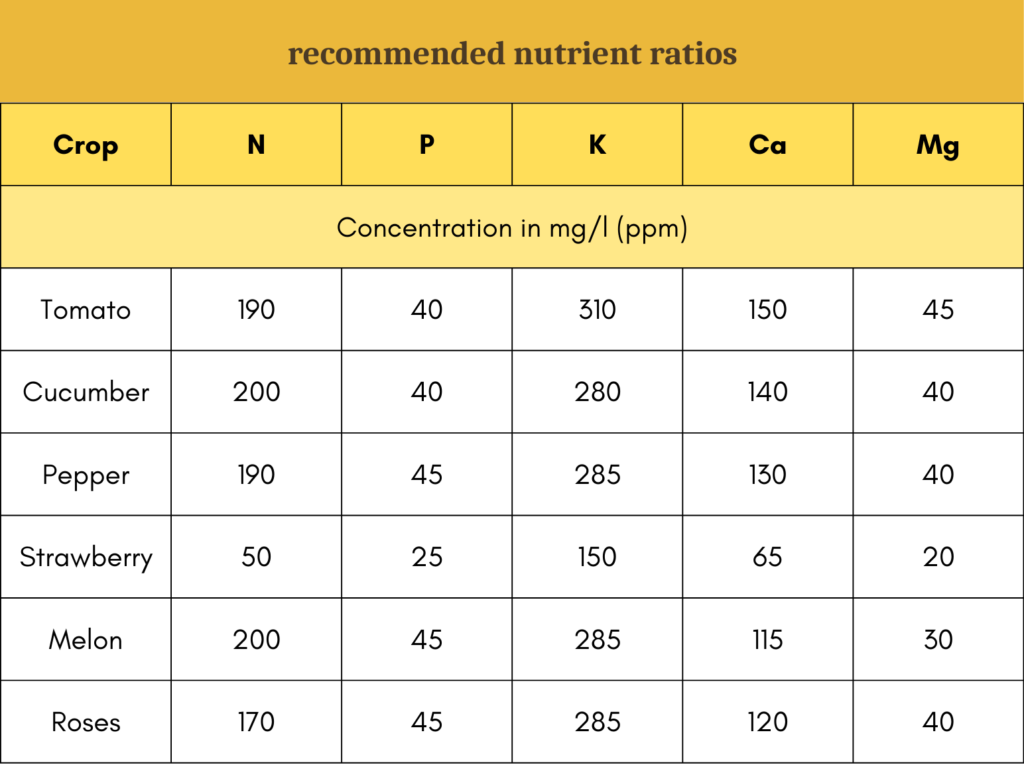
For seedlings, a nutrient solution with a higher ratio of nitrogen (N) promotes vigorous leafy growth and vibrant green color. Aim for a ratio such as 3:1:2 (N:P:K) or 2:1:2 to provide ample nitrogen while maintaining a balanced nutrient profile. Remember, our goal is to help them establish strong roots and develop healthy foliage.
Keep an eye on the micronutrients as well. Seedlings require trace amounts of essential elements like iron (Fe), manganese (Mn), zinc (Zn), and others. These micronutrients play crucial roles in various metabolic processes and overall plant health. Ensure that your nutrient solution includes these micronutrients at recommended levels to prevent deficiencies.
Nutrient Deficiencies and Toxicities: Watchful Guardians
While we aim to provide optimal nutrition, it’s essential to be vigilant about nutrient deficiencies and toxicities that can affect our seedlings. Keep an eye out for signs such as yellowing or browning leaves, stunted growth, or distorted foliage, as these could indicate nutrient imbalances.
Common deficiencies to watch out for include yellowing of leaves due to nitrogen deficiency or pale, interveinal chlorosis caused by iron deficiency. On the other hand, nutrient toxicities can manifest as burnt leaf tips or edges, wilting, or abnormal growth. Adjust your nutrient solution and pH levels accordingly to address these issues and provide a balanced environment.
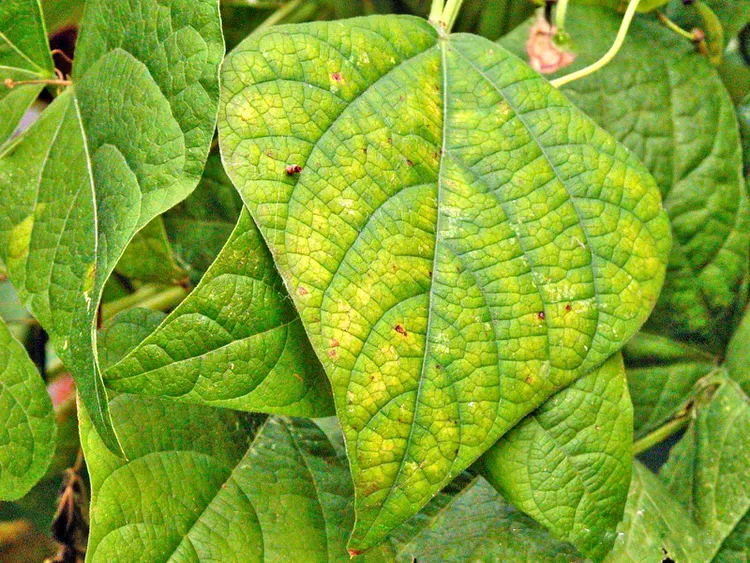


As always, remember that every plant is unique, and their nutrient requirements may vary. Monitor your seedlings closely, observe their responses, and make adjustments accordingly to ensure they receive the nourishment they need to thrive.
So, my fellow plant parents, let’s embark on this journey of nurturing our tiny green babies. Strike the right pH balance, maintain an appropriate EC level, and provide them with the ideal nutrient solution ratios for their growth stage. With the right nutrition, we’ll witness our seedlings transform into robust, leafy wonders, ready to take on the world.
In the next section of our blog post, we’ll dive into the nutrient requirements for the seedling stage, exploring the specific macro-nutrient and micro-nutrient levels that are recommended for optimal growth. We’ll also discuss practical tips for adjusting nutrient solution ratios and maintaining a healthy environment for our seedlings.
Recommended Macronutrient and Micronutrient Levels: Fueling Seedling Success
In the delicate seedling stage, providing the right balance of macronutrients and micronutrients is crucial. Let’s take a closer look at the recommended levels for these essential elements:
Macronutrients:
- Nitrogen (N): Aim for a concentration of 100-200 ppm (parts per million) of nitrogen to promote healthy leafy growth without encouraging excessive stretching.
- Phosphorus (P): Maintain a level of 25-50 ppm of phosphorus to support root development and overall plant vigor.
- Potassium (K): Provide a concentration of 100-150 ppm of potassium to enhance disease resistance and facilitate water uptake.
Micronutrients:
- Iron (Fe): Maintain iron levels between 2-5 ppm to prevent leaf chlorosis and ensure proper photosynthesis.
- Manganese (Mn): Aim for a concentration of 0.5-2 ppm of manganese for optimal enzyme function and leaf development.
- Zinc (Zn): Provide a level of 0.5-2 ppm of zinc to support hormone production and overall growth.
- Copper (Cu): Maintain copper levels between 0.1-0.5 ppm for enzyme activation and chlorophyll synthesis.
- Molybdenum (Mo): Aim for a concentration of 0.02-0.05 ppm of molybdenum to support nitrogen metabolism.
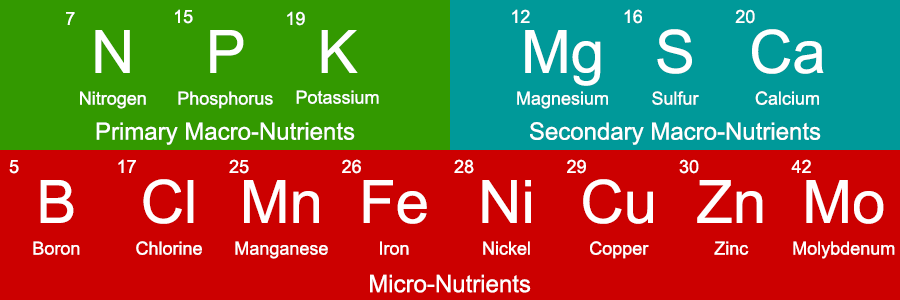
Remember, these are general guidelines, and specific plant species may have slightly different requirements. It’s essential to monitor your seedlings closely and adjust nutrient levels based on their individual responses.
Adjusting Nutrient Solution Ratios: Fine-tuning the Recipe
Sometimes, despite our best efforts, nutrient imbalances may arise. Fear not, for you have the power to adjust and fine-tune the nutrient solution ratios to meet the specific needs of your seedlings.
If you notice signs of nutrient deficiencies, such as yellowing leaves, consider increasing the concentration of the deficient nutrient in your solution. On the other hand, if you detect nutrient toxicities, reduce the concentration of the excessive nutrient to restore balance.
It’s always wise to make gradual adjustments, allowing your seedlings time to acclimate to the changes. Keep in mind that maintaining proper pH and EC levels is equally crucial when adjusting nutrient solution ratios. These factors work hand in hand to ensure optimal nutrient uptake and prevent potential nutrient lockouts.
In conclusion, providing the right nutrient solution ratios and maintaining appropriate pH and EC levels is essential for nurturing our tiny green babies during the seedling stage. By following recommended macronutrient and micro nutrient levels, closely monitoring our seedlings, and making necessary adjustments, we can set the foundation for their healthy growth and development.
In the upcoming sections of our blog post, we’ll explore the nutrient requirements for the vegetative and flowering stages, unlocking the secrets to maximizing growth and achieving bountiful harvests. So, stay tuned, fellow plant enthusiasts, and let’s continue this nutrient-rich journey together!
Vegetative Stage: Growing Strong
Welcome to the vegetative stage, where our hydroponic plants embark on a journey of robust growth and lush greenery. It’s like witnessing Mother Nature’s version of a growth spurt—only without the awkward teenage years. So, let’s dive into the essentials of nourishing our green wonders during this exciting phase.
Recommended Macronutrient and Micronutrient Levels: Fueling Growth
In the vegetative stage, our plants need a balanced supply of macronutrients and micronutrients to thrive. Here are the recommended levels to support their vigorous growth:
Macronutrients:
- Nitrogen (N): Maintain a concentration of 150-200 ppm of nitrogen to foster vibrant foliage and strong stem development. Remember, nitrogen is the key player during this stage, encouraging our plants to reach new heights.
- Phosphorus (P): Provide a level of 50-100 ppm of phosphorus to promote robust root growth and flower bud initiation, setting the stage for future blossoms.
- Potassium (K): Aim for a concentration of 150-200 ppm of potassium to support overall plant health, water regulation, and disease resistance.
Micronutrients:
- Iron (Fe): Maintain iron levels between 2-5 ppm to prevent leaf chlorosis and ensure proper photosynthesis, as iron is crucial for chlorophyll production.
- Manganese (Mn): Aim for a concentration of 1-2 ppm of manganese to facilitate enzyme activation and enhance overall plant vigor.
- Zinc (Zn): Provide a level of 0.5-2 ppm of zinc to support hormone production and essential metabolic processes.
- Copper (Cu): Maintain copper levels between 0.1-0.5 ppm for enzyme activation and chlorophyll synthesis.
- Molybdenum (Mo): Aim for a concentration of 0.05-0.1 ppm of molybdenum to support nitrogen metabolism and enzyme function.
Remember, these are general guidelines, and specific plant varieties may have slightly different nutrient requirements. Monitor your plants closely and adjust nutrient levels based on their individual needs.
Ideal pH Level and EC: Striking the Balance
Maintaining the ideal pH level and electrical conductivity (EC) in our nutrient solutions is crucial during the vegetative stage. Here’s what you need to know:
pH Level:
Aim for a pH range of 5.8-6.2 for most hydroponic plants during the vegetative stage. This slightly acidic to neutral range ensures optimal nutrient availability and uptake. Adjust the pH as needed to keep your plants in their comfort zone.

Electrical Conductivity (EC):
Start with an EC of around 1.2-1.8 mS/cm during the vegetative stage. As your plants grow and develop, gradually increase the EC within the recommended range to meet their increasing nutritional demands. Monitor your plants’ response and adjust the EC accordingly.
Ideal Nutrient Solution Ratios: Fueling Growth and Vitality
Finding the right nutrient solution ratios is like creating a balanced meal plan for our plants. During the vegetative stage, a ratio of 3:1:2 (N:P:K) or 2:1:2 often works well, ensuring ample nitrogen for leafy growth, phosphorus for root development, and potassium for overall plant health.
It’s important to note that nutrient solution ratios may vary based on plant species, genetics, and growth conditions. So, observe your plants closely, assess their response, and make adjustments as needed to achieve optimal growth and vitality.
Nutrient Deficiencies and Toxicities: The Balancing Act
While we strive to provide the perfect nutrition, nutrient imbalances can sometimes occur, leading to deficiencies or toxicities. Here are a few common issues to watch out for during the vegetative stage:
Nutrient Deficiencies:
Keep an eye out for signs of nutrient deficiencies such as yellowing or discolored leaves, stunted growth, or poor overall vigor. Common deficiencies during this stage include nitrogen (N), phosphorus (P), and iron (Fe). Adjust your nutrient solution accordingly by increasing the concentration of the deficient nutrient to restore balance and support healthy growth.
Nutrient Toxicities:
Excessive levels of certain nutrients can lead to toxicities, causing leaf burn, tip necrosis, or overall plant decline. Nutrients like nitrogen (N), phosphorus (P), and potassium (K) can become problematic when supplied in excess. If you notice signs of nutrient toxicity, reduce the concentration of the excessive nutrient in your nutrient solution to restore equilibrium and prevent further damage.
Remember, nutrient deficiencies and toxicities can have similar symptoms, so it’s crucial to properly diagnose the issue before taking action. Regularly monitor your plants, observe their growth patterns, and make adjustments accordingly.
In conclusion, the vegetative stage is a time of rapid growth and development for our hydroponic plants. By providing the recommended macronutrient and micronutrient levels, maintaining the ideal pH and EC in our nutrient solutions, and understanding nutrient solution ratios, we can nurture our plants towards a thriving vegetative phase.
Keep a close eye out for nutrient deficiencies and toxicities, making adjustments as necessary. With a little humour and a lot of care, we can guide our green wonders from seedling to harvest, witnessing their remarkable transformation along the way. So, grab your gardening gloves and get ready for the next exciting stage of our hydroponic adventure—the flowering stage. Stay tuned for our upcoming blog post, where we’ll uncover the secrets to blossoming buds and abundant blooms. Happy growing!
Flowering Stage: The Magnificent Blooms
Welcome to the flowering stage, where our hydroponic plants are about to put on a show-stopping display of colours, fragrances, and bountiful harvests. It’s like attending a botanical extravaganza, where the air is filled with the promise of delicious rewards. So, let’s explore the essential nutrient requirements for this stage and ensure our plants reach their full flowering potential.
Recommended Macronutrient and Micronutrient Levels: Setting the Stage for Blooming Success
During the flowering stage, our plants have unique nutritional needs to support flower production, bud development, and the synthesis of essential compounds. Here are the recommended macronutrient and micronutrient levels to fuel their blooming journey:
Macronutrients:
- Phosphorus (P): Increase the concentration of phosphorus to 100-150 ppm during the flowering stage. Phosphorus is the MVP (Most Valuable Phosphorus) during this phase, promoting robust flower formation, enhancing color intensity, and increasing overall yield.
- Potassium (K): Maintain a concentration of 150-200 ppm of potassium to support flower quality, boost essential oil production, and improve plant resistance to stressors.
- Nitrogen (N): While nitrogen is still essential, reducing the concentration to 100-150 ppm during the flowering stage helps divert plant energy towards flower and fruit development, rather than excessive vegetative growth.
Micronutrients:
- Boron (B): Maintain a concentration of 0.5-1 ppm of boron to support flower initiation, pollen viability, and overall reproductive success.
- Calcium (Ca): Provide a level of 100-200 ppm of calcium to promote proper cell wall formation, preventing disorders such as blossom end rot.
- Magnesium (Mg): Aim for a concentration of 50-100 ppm of magnesium to support photosynthesis, enzyme activation, and overall plant health.
Remember, these are general guidelines, and certain plant varieties may have specific nutrient requirements. Monitor your plants closely, assess their responses, and adjust nutrient levels accordingly.
Ideal pH Level and EC: Striking the Perfect Chord
Maintaining the ideal pH level and electrical conductivity (EC) in our nutrient solutions remains crucial during the flowering stage. Here’s what you need to know:
pH Level:
Aim for a pH range of 5.5-6.5 during the flowering stage. This slightly acidic to neutral range ensures optimal nutrient availability, allowing our plants to absorb the necessary building blocks for magnificent blooms. Regularly monitor the pH level and make adjustments as needed to maintain stability.
Electrical Conductivity (EC):
Begin with an EC of around 1.8-2.5 mS/cm during the flowering stage. As our plants enter this stage, their nutritional demands increase, requiring a slightly higher EC to support flower development. Gradually adjust the EC within the recommended range, observing your plants’ response and adjusting as necessary.
Ideal Nutrient Solution Ratios: Harmonizing the Blooming Symphony
Just as a symphony requires perfect harmony, our nutrient solution ratios play a vital role in the flowering stage. A ratio of 1:2:3 (N:P:K) or 1:2:2 often works well, ensuring a balance between nitrogen for essential growth processes, phosphorus for abundant flower formation, and potassium for flower quality and stress resistance.
However, it’s important to remember that each plant has its own unique preferences and requirements. Observe your plants closely, fine-tune the nutrient solution ratios, and allow them to guide you towards their blooming masterpiece.
Nutrient Deficiencies and Toxicities: Orchestrating Balance
Despite our best efforts, occasionally nutrient imbalances can occur, leading to deficiencies or toxicities during the flowering stage. Here are a few common issues to be mindful of:
Nutrient Deficiencies:
Keep a keen eye out for signs of nutrient deficiencies, such as pale or discolored leaves, stunted growth, or reduced flower production. Common deficiencies during this stage may include phosphorus (P), potassium (K), and magnesium (Mg). Adjust your nutrient solution by increasing the concentration of the deficient nutrient to restore balance and promote healthy flowering.
Nutrient Toxicities:
Excessive levels of certain nutrients can result in toxicities, negatively impacting flower development and overall plant health. Nutrients like nitrogen (N), phosphorus (P), and potassium (K) can become problematic when supplied in excess. If you notice signs of nutrient toxicity, reduce the concentration of the excessive nutrient in your nutrient solution to restore equilibrium and prevent further damage.
Remember to closely monitor your plants, as nutrient deficiencies and toxicities can manifest similar symptoms. Pay attention to their growth patterns and appearance, and make adjustments accordingly to provide the optimal nutrient balance.
In conclusion, the flowering stage is an enchanting phase where our hydroponic plants reach their full blooming potential. By providing the recommended macronutrient and micronutrient levels, maintaining the ideal pH and EC in our nutrient solutions, and understanding nutrient solution ratios, we can nurture our plants to produce magnificent blooms and bountiful harvests. However, remember that each plant is unique, and adjustments may be necessary based on their individual needs. Embrace the journey, experiment with care, and witness the dazzling transformation of your hydroponic garden. Happy flowering!
Harvest Stage: Nurturing the Ripening
Welcome to the grand finale of our hydroponic journey—the ripening and harvest stage. It’s the moment we’ve been eagerly awaiting, as our plants prepare to reward us with the culmination of their hard work and dedication. Let’s dive into the essential nutrient requirements during this stage and ensure a successful harvest of flavoursome and vibrant produce.
Recommended Macronutrient and Micronutrient Levels: Enhancing Flavor and Nutritional Value
As our plants transition into the ripening and harvest stage, their nutritional needs shift to optimize flavour development, nutritional value, and overall crop quality. Here are the recommended macronutrient and micronutrient levels to ensure a bountiful and delectable harvest:
Macronutrients:
- Potassium (K): Elevate the concentration of potassium to promote fruit ripening, enhance flavour profiles, and increase the sugar content of your produce. Aim for a level of 200-300 ppm of potassium during this stage.
- Phosphorus (P): Maintain a moderate concentration of phosphorus, around 50-100 ppm, to support energy transfer and contribute to the development of robust and well-formed fruits.
- Calcium (Ca): Continue supplying calcium at a level of 100-200 ppm to prevent calcium-related disorders and enhance fruit firmness and quality.
Micronutrients:
- Iron (Fe): Ensure a sufficient supply of iron, around 1-2 ppm, to support proper chlorophyll synthesis and enhance overall plant vitality.
- Zinc (Zn): Provide a concentration of 0.5-1 ppm of zinc to facilitate enzymatic reactions, hormone regulation, and overall fruit development.
- Manganese (Mn): Maintain a level of 0.5-1 ppm of manganese to support photosynthesis, pollen viability, and fruit quality.
Ideal pH Level and EC: Fine-Tuning the Ripening Symphony
During the ripening and harvest stage, maintaining the ideal pH level and electrical conductivity (EC) remains critical to maximize nutrient uptake and flavour development. Here’s what you need to know:
pH Level:
Aim for a slightly acidic to neutral pH range of 5.5-6.5. This ensures optimal nutrient availability, allowing our plants to absorb the necessary components for enhanced flavour and nutritional value. Regularly monitor and adjust the pH level as needed to maintain the desired range.
Electrical Conductivity (EC):
Gradually reduce the EC level during the ripening and harvest stage. Begin with an EC of around 1.2-2.0 mS/cm and gradually lower it to promote flavour concentration and prevent excessive vegetative growth.
Ideal Nutrient Solution Ratios: Fine-Tuning the Final Act
To provide the best support during the ripening and harvest stage, fine-tuning your nutrient solution ratios is essential. Adjust the nutrient solution to provide a balanced ratio that aligns with the specific requirements of your plants and their fruiting stage. While general guidelines suggest a ratio of 1:2:2 (N:P: K) or 1:2:3, remember to observe your plants’ response and make adjustments accordingly.
Celebrating the Harvest: Rewards and Lessons
As the time for harvest approaches, take a moment to celebrate the rewards of your hard work and dedication. The ripening and harvest stage is a testament to your passion for hydroponic gardening. However, it’s also an opportunity to reflect on the lessons learned throughout the process.
Keep a close eye on your plants during this crucial stage, monitoring their progress and assessing their readiness for harvest. Each variety may exhibit unique signs indicating optimal ripeness, such as changes in colour, aroma, or texture. Trust your senses, and embark on the joyful adventure of reaping the fruits of your labour.
In conclusion, the ripening and harvest stage is a culmination of your dedication and nurturing efforts. By providing the recommended macronutrient and micronutrient levels, maintaining the ideal pH and EC in your nutrient solutions, and fine-tuning nutrient solution ratios, you’ll pave the way for a remarkable harvest. Celebrate the flavours, enjoy the nourishment, and cherish the knowledge gained along the way. Your hydroponic garden has reached its grand finale, and it’s time to savour the abundant rewards of your labour.
That’s It
As we reach the end of our hydroponic journey, from seedling to harvest, we hope this guide has inspired and empowered you to embark on your own fruitful adventures in hydroponic gardening. Remember, each stage of plant growth requires specific nutrient requirements, and by understanding and catering to those needs, you can witness the magic unfold.
From the tender sprouts of seedlings to the lush foliage of the vegetative stage, and finally, the vibrant blooms and abundant harvest of the ripening stage, your dedication and care have nurtured your plants to their full potential. Along the way, you’ve encountered challenges and learned valuable lessons, all contributing to your growth as a hydroponic gardener.
As you continue your journey, don’t be afraid to experiment, innovate, and push the boundaries of what is possible. Nature has a way of surprising us, and with your creativity and passion, there’s no limit to what you can achieve. Remember, even the most experienced gardeners started as novices, and with each step, you gain wisdom and expertise.
So, grab your gardening gloves, mix up those nutrient solutions, and embark on your hydroponic adventures with confidence and enthusiasm. As you witness the transformation of tiny seeds into thriving plants, let the joy of nurturing and harvesting your own fresh produce fill your heart.
Thank you for joining us on this incredible journey through hydroponic nutrient requirements. We hope you’ve gained valuable insights and inspiration to create your hydroponic oasis. May your plants flourish, your harvests be bountiful, and your green thumbs continue to grow. Happy growing, and here’s to a future filled with vibrant gardens and mouthwatering harvests!
